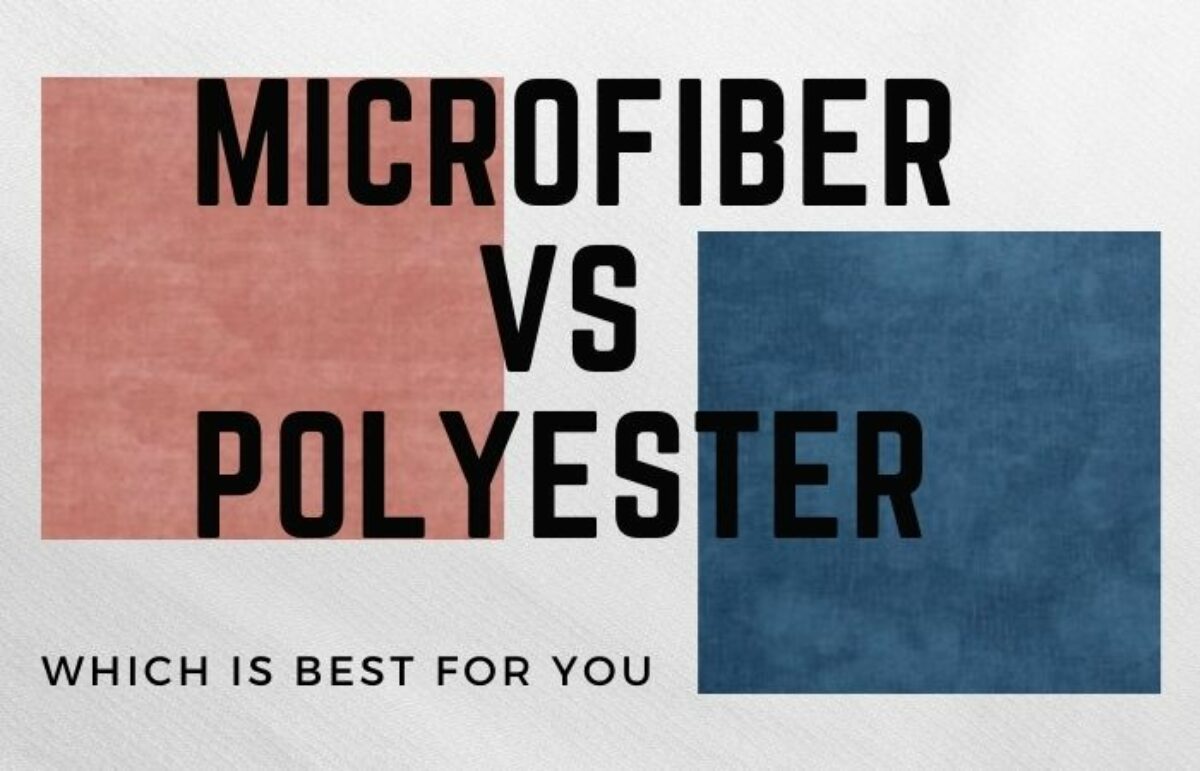Want to know the difference between microfiber vs polyester sheets? Then, you are at the right page.
Are you shopping for bedsheets in the market? Confused between Microfiber vs Polyester sheets? Then, don’t worry! We’ve got you covered!
In this article, we will know the 5 key differences between Microfiber and Polyester sheets as both offer their unique benefits, and by the end of this article, you will have an informed decision.
Also Read:- Microfiber vs Cotton Sheets : What’s the Differences?
Microfiber Sheets: Overview

Source: img.fruugo.com
Microfiber Sheets are made of extremely fine fibers that are woven together to form a soft, lightweight fabric. This kind of sheet can be manufactured from a variety of materials, including nylon, polymers, polyester or wood pulp, and is distinguished by its distinct thin-ness.
These sheets are light in weight and are thin, and the greater the sheet’s quality, the better at wicking moisture they are. Microfiber sheets are often sturdy and long-lasting despite their thinness.
The durability of the sheet will increase with the tighter the weave and with more frequent washings.
Polyester Sheets: Overview

Source: img.fruugo.com
Synthetic fibers are used to make polyester bed linens. Although 100% synthetic fibers can be used to make polyester fabric, many polyester sheets are actually polyester blends.
These linens ought to be soft and lightweight to the touch and are available in different colors and can be found easily in the market.
Exploring the 5 Key Differences Between Microfiber vs Polyester Sheets

Source: sewingfeed.com
| Aspect | Microfiber Sheets | Polyester Sheets |
| Durability | Contrarily, microfiber is a fabric that was designed to be lighter than polyester and has smaller fibers overall. It does have a high level of durability, though, as polyester still makes up the majority of the material. | Polyester is renowned for being strong. It’s actually one of the toughest materials available, which is why it is used for so many things, including clothing and bedding. It has a high level of resilience to wear and tear. Additionally, it resists wrinkling and shrinking. |
| Breathability | Because Microfiber’s thinner fibers are not as tightly woven as polyester’s, more air may travel through between them, making microfiber more breathable than polyester. | Polyester has some degree of breathability. It is not extremely breathable due to the close weave of its fibers. |
| Comfort | Microfiber, on the other hand, has a silk-like texture or much softer fibers. Since it has a softer feel, it works well for bedding and pillowcases. | Polyester is quite stiff and scratchy since its fibers are thicker. Wearing it is not particularly comfortable, especially for extended hours. Because of this, it is typically combined with other textiles to increase the comfort. |
| Warmth | Microfiber wicks moisture away much like polyester does. Therefore, Microfiber is a fantastic option for both cold and warm weather. | Because of its cool feel, polyester is perfect for summer and hotter climes. Additionally, it draws sweat from your skin. |
| Maintenance & Care | Like Polyester, microfiber should not be washed or dried at high temperature. | Polyester is easy to maintain. All you have to do is watch out damaging high temps when washing or drying the item. |
We’ve also covered a post on a similar blog topic which you can find here: -Microfiber vs Bamboo Sheets : What’s the Differences?
Which One Is Better: Microfiber Vs Polyester Sheets?

Source: elkieark.com
Between Microfiber and Polyester, there is not really an obvious winner. The best option depends on how and where you plan to use the cloth because each has pros and cons of its own.
Which material you choose to use might also be influenced by outside elements like the local climate’s temperature and humidity.
Polyester is not the best material choice for hot and humid regions since it lacks breathability. Additionally, it feels more synthetic, which can be uncomfortable over time.
This is particularly true of bedsheets, which can cause you to feel warm and perspire while you sleep. Microfiber bed sheets are the best option in this situation since they provide greater ventilation and a softer, more pleasant feel for sleeping on.
Conclusion
We trust that this easily clarified the distinctions between Microfiber and Polyester sheets. Since microfiber is developed from polyester, it nevertheless differs from microfiber while retaining some of the qualities of its parent fabric.
You have to consider the budget, breathability, comfortability, durability and maintenance and care applications of both these sheets while making a decision.


